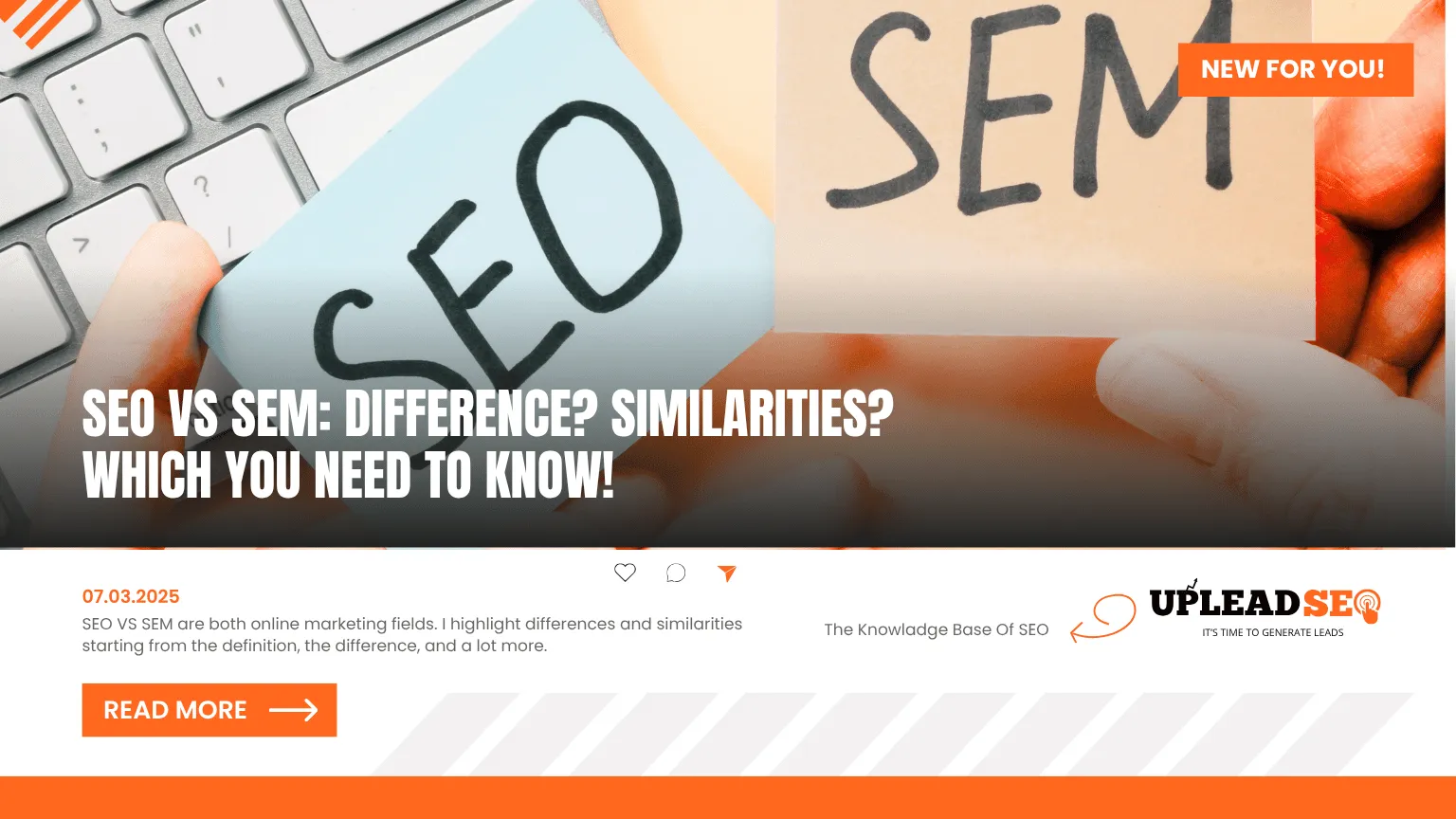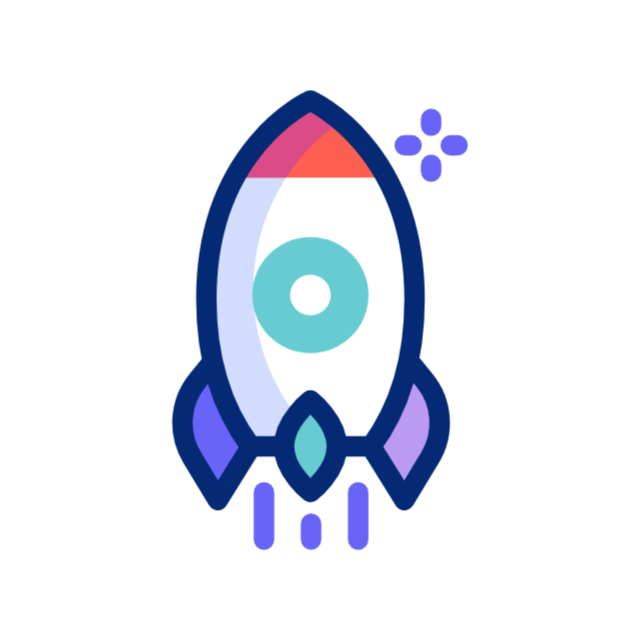SEO VS SEM are both online marketing fields. I highlight differences and similarities starting from the definition, the difference, what to focus on, and whether we can both at the same time.
What Is SEO?
Search Engine Optimization is the complete, ongoing set of techniques that you apply to your website. The goal is to organically rank on SERP to gain unpaid traffic. It includes on-page Optimization, off-page Optimization, and Technical seo.
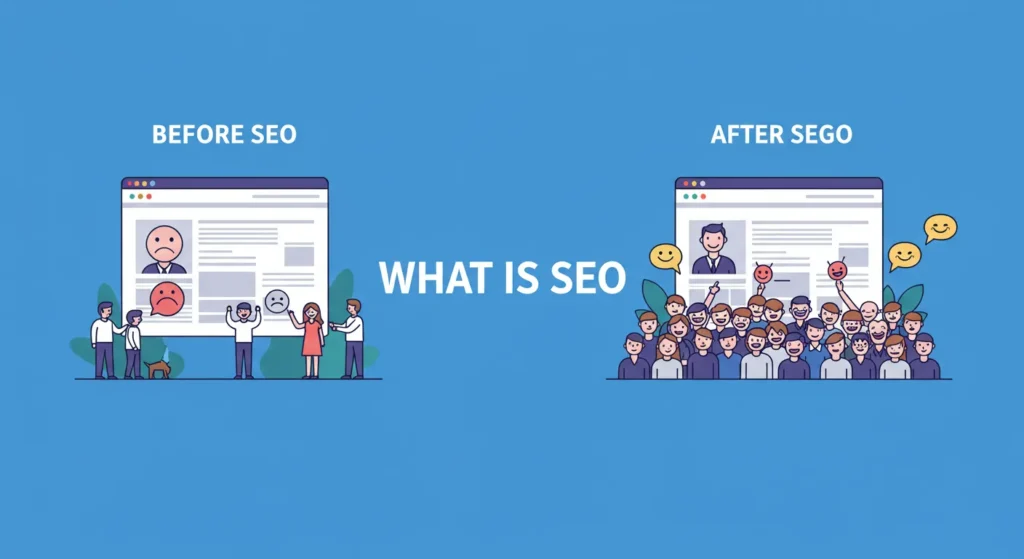
What Is SEM?
Search Engine Marketing is a whole world which have two children, SEO, PPC. PPC is pay-per-click. In easy words, this is the paid and unpaid search. On search engines, one way to optimize a website and rank on SERP, and another is to give money to Google and run Google ads, which leads to your website at the top before organic websites.
It includes Paid Advertising and Metrics, increasing brand awareness, instant results, targeting, pay-per-action, better decision making, and improved lead generation. Keywords, ad auctions, ad copy, Quality Score.
SEO vs. SEM: How Long Does It Take to See Results
SEM contains both seo and paid ads. Normally, SEO takes 6 months for a website to rank on SERP(Search Engine Result Page), because if a website is new search engine needs to collect data, which we call historical data is how user intracting with your website they all recorded and then according to the competition, it give you ranking. On the other hand, PPC does not take time when you run ads, your website shows, but the main drawback is that as you run ads, the traffic comes in as you stop the traffic also stops.
SEO or PPC: What to Focus On:
Search Engine Optimization (SEO) is the practice of optimizing your website and its content to rank higher in the organic (non-paid) search results. This is an “earned” placement, achieved through a long-term strategy of creating high-quality, relevant content, building a strong backlink profile, and ensuring your website is technically sound and user-friendly.
Pay-Per-Click (PPC), on the other hand, is a form of paid advertising where you bid to have your ads displayed at the top or bottom of the SERPs for specific keywords. You pay a fee each time a user clicks on your ad, hence the name. This is a “paid” placement, offering immediate visibility for as long as you are willing to pay.
| Feature | Search Engine Optimization (SEO) | Pay-Per-Click (PPC) |
| Cost | No direct cost for clicks; investment is in resources (time, expertise, content creation). | Direct cost for every click on your ad. |
| Time to Results | Long-term strategy; can take months to see significant results. | Immediate results: traffic can be generated within hours of launching a campaign. |
| Sustainability | Once rankings are achieved, they can be maintained with ongoing effort, providing lasting traffic. | Traffic stops as soon as you stop paying for ads. |
| Audience Targeting | Targets a broad audience searching for relevant keywords and topics. | Highly specific targeting based on demographics, location, interests, and remarketing to past visitors. |
| Trust and Credibility | Organic results are often perceived as more credible and trustworthy by users. | Users are aware these are paid ads, which can sometimes lead to lower trust for some queries. |
| Flexibility | Less flexible; changes in strategy and content can take time to impact rankings. | Highly flexible; campaigns can be quickly launched, paused, or adjusted. |
| ROI | Typically, a higher long-term ROI is achieved as the value of organic traffic compounds over time. | Can provide a strong and immediate ROI, but requires continuous investment. |
Now, according to the business choice is yours!
When to Focus on Just SEO?
- Long-Term, Cost-Effective Growth: Organic search drives 53.3% of all web traffic, while paid ads account for just 15%, so once you’re ranking, clicks are essentially free.
- High Click-Through & Conversion Rates: The #1 organic result earns a 27.6% CTR, compared to 1.63% for paid ads; organic conversions average 14.6%, versus 1.3% for PPC.
- Superior ROI: SEO can deliver up to $250 return for every $1 spent, making it one of the most profitable channels.
- Authority & Trust Building: High organic rankings signal credibility, crucial in sectors like finance or healthcare.
- Best for Research-Phase Audiences & Low-Competition Niches: Capture users early with blog content and dominate less crowded markets.
When to Focus Just on PPC?
- Instant Visibility: Campaigns can launch in hours, perfect for new sites or urgent traffic boosts.
- Precise Targeting: Filter by keywords, location, demographics, device, and even remarketing lists.
- Time-Sensitive Promotions: Turn ads on/off for flash sales, events, or product launches.
- Competitive Keywords: Skip uphill SEO battles in crowded spaces—appear atop SERPs immediately.
- Testing & Data-Driven Insights: The average CPC is $4.22, with a 3.75% conversion rate on search ads. Use PPC to validate offers before scaling via SEO.
Can I use both SEO and SEM simultaneously?
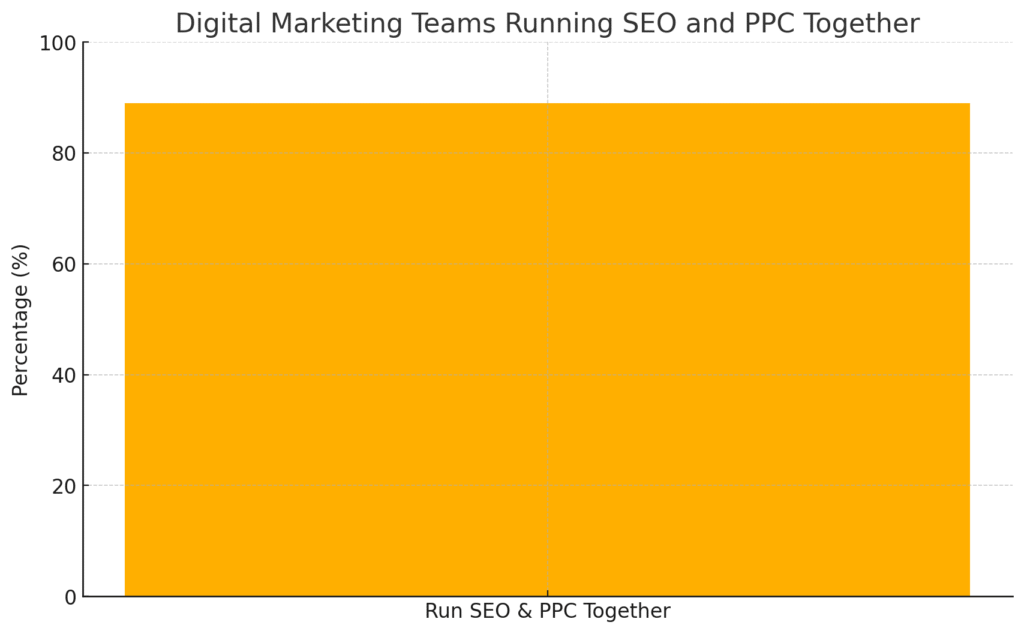
Yes—most marketers do. 89% of digital marketing teams run SEO and PPC together to leverage each channel’s strengths. When combined, you can see 25% more clicks and 27% higher profits compared to using just one tactic.
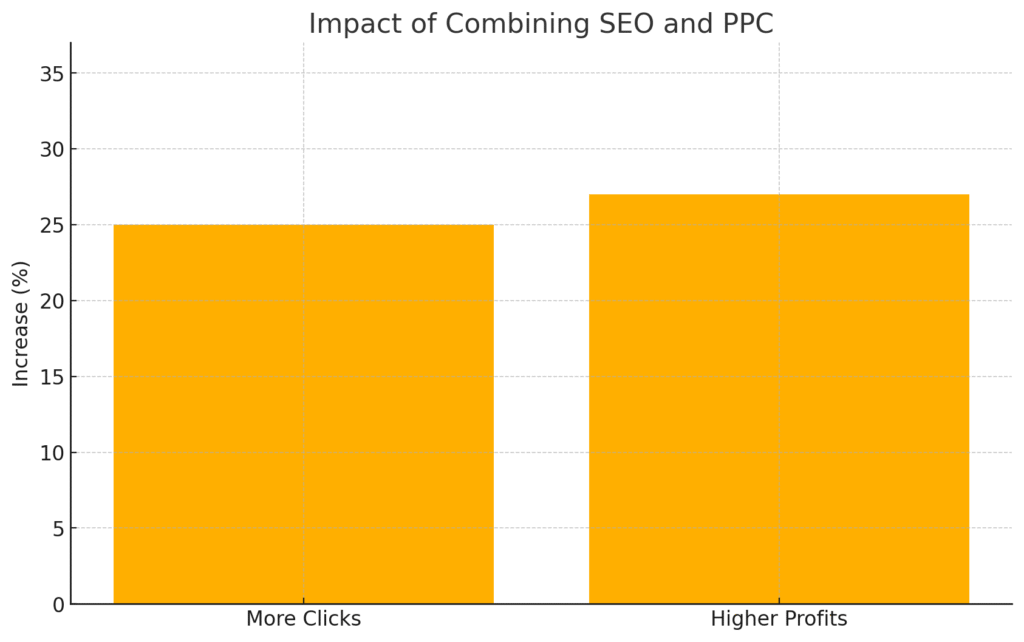
PPC’s real-time keyword data speeds up your SEO targeting, while strong organic rankings improve ad Quality Scores and lower CPCs over time. In fact, 71% of e-commerce brands use PPC for immediate sales while building SEO for sustainable growth. This dual approach maximizes visibility, insights, and ROI.
What is the fundamental difference between SEO and SEM?
SEO (Search Engine Optimization) is a set of techniques used to improve a website’s organic (unpaid) ranking on Search Engine Result Pages (SERPs). It’s about “earning” visibility through long-term efforts like creating high-quality content, building backlinks, and ensuring technical soundness. SEM (Search Engine Marketing) is a broader field that encompasses both SEO and PPC (Pay-Per-Click) advertising. While SEO focuses on unpaid traffic, SEM also includes paid strategies where you bid to display ads at the top of SERPs, offering immediate, though paid, visibility.
How do the timelines for seeing results differ between SEO and PPC?
SEO is a long-term strategy, typically taking around six months for a website to show significant ranking improvements on SERPs. This is because search engines need time to collect and analyze historical data about user interaction with the website and assess its relevance and authority. In contrast, PPC campaigns offer immediate results; traffic can be generated within hours of launching an ad campaign. However, the traffic from PPC stops as soon as the advertising budget runs out.
What are the main cost implications for SEO versus PPC?
With SEO, there is no direct cost for each click your website receives. The investment lies in resources such as time, expertise, and content creation. While there’s an upfront investment, once high rankings are achieved, the clicks are essentially free. For PPC, there is a direct cost for every click on your ad. This means you pay a fee each time a user interacts with your advertisement, making it a continuous expenditure for as long as you want traffic.
How do SEO and PPC differ in terms of audience targeting and flexibility?
SEO targets a broad audience searching for relevant keywords and topics, and its flexibility is lower as changes in strategy and content take time to impact rankings. PPC, on the other hand, offers highly specific targeting options based on demographics, location, interests, and even remarketing to past visitors. PPC campaigns are also highly flexible, allowing for quick launching, pausing, or adjustments to adapt to changing marketing needs or promotions.
When should a business primarily focus on SEO?
A business should focus on SEO for long-term, cost-effective growth, especially since organic search drives a significant portion of web traffic (53.3%). SEO is ideal for achieving high click-through rates (the #1 organic result earns a 27.6% CTR) and superior ROI (up to $250 return for every $1 spent). It’s also crucial for building authority and trust, particularly in sensitive sectors like finance or healthcare, and is best for targeting audiences in the research phase or dominating low-competition niches with valuable content.
When is it more advantageous for a business to focus primarily on PPC?
PPC is advantageous for achieving instant visibility, which is perfect for new websites or urgent traffic boosts. Its precise targeting capabilities allow filtering by keywords, location, demographics, and devices, making it ideal for time-sensitive promotions like flash sales or product launches. PPC can also be used to bypass intense SEO competition for highly competitive keywords, and it’s excellent for testing offers and gathering data-driven insights before scaling strategies through SEO.
What are the benefits of using both SEO and SEM (PPC) simultaneously?
Most marketers combine SEO and PPC to leverage the strengths of each channel, as this integrated approach can lead to 25% more clicks and 27% higher profits compared to using only one tactic. PPC’s real-time keyword data can significantly speed up SEO targeting efforts, while strong organic rankings can improve ad Quality Scores, leading to lower CPCs (cost-per-click) over time. This dual strategy maximizes overall visibility, provides valuable insights, and optimizes ROI by achieving both immediate sales and sustainable growth.
How do users perceive organic results versus paid ads in terms of credibility?
Organic search results are generally perceived as more credible and trustworthy by users, as they are “earned” placements based on relevance and quality rather than payment. Users are aware that paid ads are commercial placements, and while they offer immediate visibility, some users may have a lower level of trust in them compared to organically ranked content, especially for certain types of queries.
